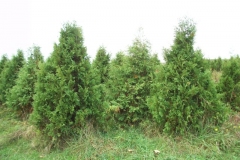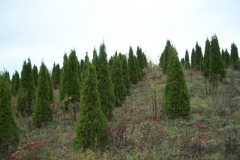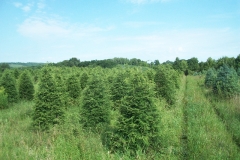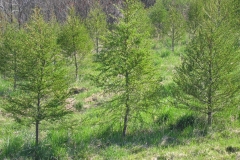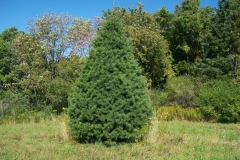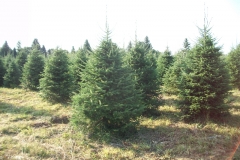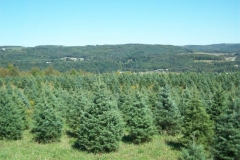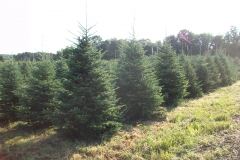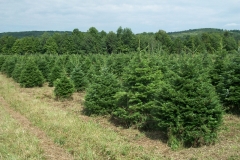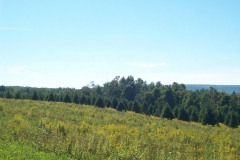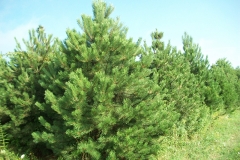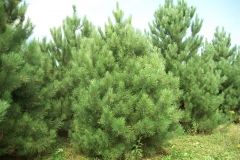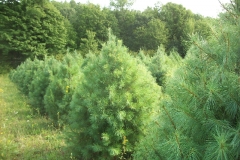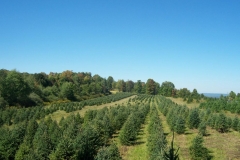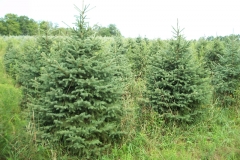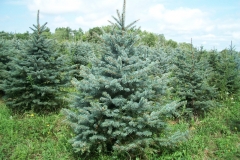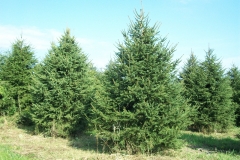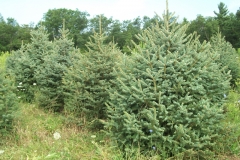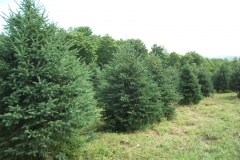-
Red Pine Trees - Pinus Resinosa
Conifer trees bear cones and evergreen needlelike (Pinus, Abies) or scalelike (Cupressus, Chamaecyparis) leaves. A conifer is typically evergreen, although some individuals are deciduous.
8 Photos
Pyramidal Arborvitae typically reach heights of 20-30 feet with a spread of 4-5 feet. They have dark green foliage that persists through the winter. Pyramidal Arborvitae are insect and disease resistant.
6 Photos
The Emerald Green Pyramidal Arborvitae grow 10-15 feet high with a spread of 3-4 feet. They have a bright emerald green color all year and do not fade in the winter months. Common uses are for windbreak or visual barriers.
2 Photos
Hemlock Trees grow up to 70 feet high with a spread of around 35 feet. Hemlocks like moist, organic well drained soil. The Hemlock does very well in rocky bluffs or sandy soil and tolerates shade well.
5 Photos
The Japanese Larch (Larix Leptolepsis) is generally described as a perennial tree. The Japanese Larch (Kaempferi) has a long life span relative to most other plant species and a rapid growth rate.
5 Photos
Fir trees are coniferous evergreens from the Abies species and come in several varieties including Concolor, Douglas Fir, Fraser Fir, and Grand Fir. Fir trees can be identified by its unique needle-like leaves that are almost always short, measuring at only a few inches in length.
5 Photos
The Turkish Fir tree is native to Turkey and found in the mountains west and east of the Black Sea. It is a large evergreen with attractive foliage that consists of flattened needle-like leaves. The Turkish fir is becoming a popular Christmas tree because the strong branches are able to hold heavier ornaments and the needles remain on the tree longer if watered properly.
4 Photos
The Balsam fir prefers moist, well drained, acidic soil. It adapts well to cooler climates. The Balsam Fir is extensively used for Christmas trees and ornaments and needs very little shearing.
4 Photos
The Concolor Fir, also known as the White Fir, provides a decorative contrast to darker-colored evergreens. It's a popular Christmas tree because of the natural "orange" aroma.
22 Photos
The Fraser Fir serves as both an ornamental tree and a highly sought after Christmas tree. The tree grows up to 60 feet tall and 25 feet in diameter, providing a compact appearance.
7 Photos
The Grand Fir is slow growing and shade tolerant. This beautiful evergreen produces few cones. Needles are flat with rounded and notched ends.
2 Photos
The Douglas Fir has myriad uses: as a Christmas tree, ornamental tree, windbreak, or hedge. It grows fast in a variety of conditions.
6 Photos
The Austrian Pine is a versatile, fast growing tree that grows in a variety of soils conditions, including sandy, loamy, acidic. It tolerates drought conditions.
11 Photos
Red Pine can be used in the landscape as a specimen tree, a screening tree, or a windbreak tree. Red Pines grow up to 75 feet high with a spread of 15-20 feet. The needles are medium to dark green and soft.
9 Photos
The White Pine grows well in large spaces and may reach sizes over 100 feet tall. It's also commonly used as a Christmas tree.
12 Photos
-
Austrian Pine Trees - Pinus Nigra
Meyer Spruce trees are similar to the Colorado Blue Spruce, but closely related to the Dragon Spruce from western China. They are a medium size evergreen with cylindric cones that are occasionally used as ornamental trees. The Meyer Spruce grows slowly the first couple of years but once established the growth rate is also similar to the Colorado Blue Spruce. Meyer Spruce grow well in a wide variety of soils. Meyer Spruce trees are becoming more popular in the United States because they are more disease resistant than the Colorado Blue Spruce.
4 Photos
Spruce Trees are large evergreens featuring an attractive pyramid shape and stiff needles. They are from the Picea species and can grow up to heights that exceed 100 feet tall.
4 Photos
The Black Hills Spruce are dense trees that commonly used for privacy, wind breaks or accents. They hardy spruce that fairs well over the winter, and they're not well liked by deer.
5 Photos
The Colorado Blue Spruce is a perennial Christmas tree favorite. They also make great windbreaks and ornamental trees where the soil is moist. However, the Colorado Blue Spruce is the most drought tolerant spruce.
The bluer select variety of the Colorado Blue Spruce is a highly sought after tree because of it's blue color.
16 Photos
The Norway Spruce is often used as a decorative tree, as a windbreak, or as noise abatement. The tree typically reaches five feet within seven years.
21 Photos
The Serbian Spruce can grow up to 50 feet. They stay compact and dense and need very little shearing. The Serbian Spruce has needles that are short and soft with a glossy dark green on top.
1 Photos
The Engelmann Spruce grows up to 90 feet high averaging about 30 inches in diameter. They have needle-like leaves, that are about 1 inch long, blue-green in color, stiff, sharp-pointed, and square in cross-section.
2 Photos
The White Spruce grows well in the shade and can often be found on streambanks. It makes a great shade tree. It's also commonly used as a Christmas tree.
8 Photos



